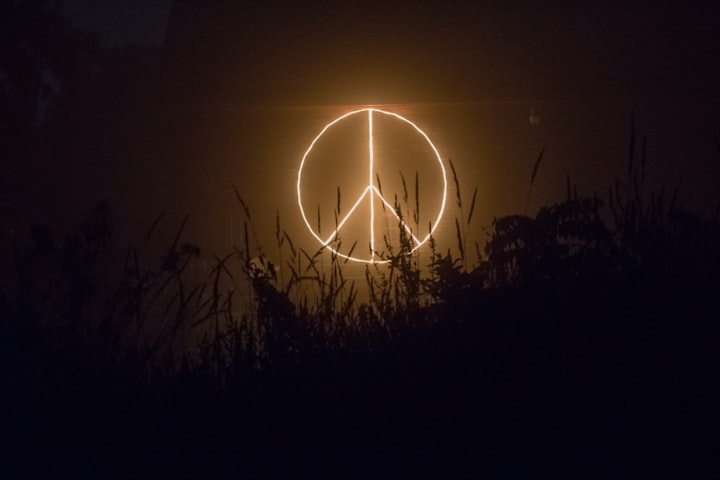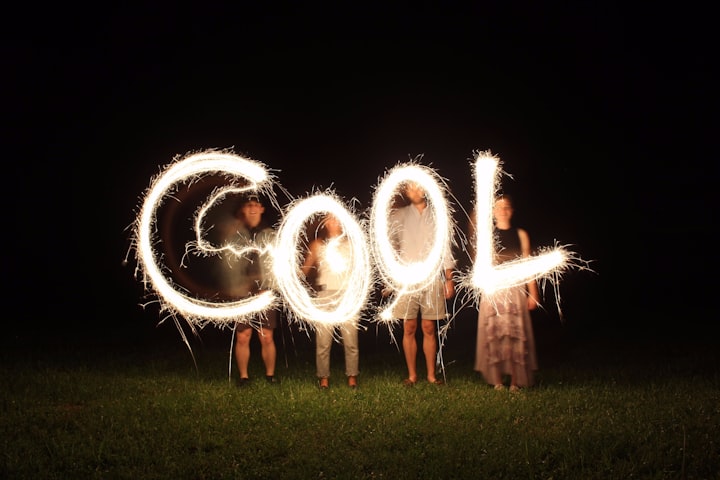☮️The Interesting History of the Internationally Recognized Peace Sign
A universal symbol that evokes emotions and memories

Universality
The ubiquitous peace sign is among the few universally recognized and understood symbols worldwide.
In the 1960s, tie-dye-garbed hippies protesting the Vietnam War in the United States elevated the peace sign to international prominence as a cultural symbol. For those of a certain age, the peace sign elicits poignant memories and perhaps profoundly held philosophies.
In that era, it depicted the popular refrains of "peace not war" or "make love, not war."

Today, the design continues to be identifiable across multiple generations throughout the world, often encompassing broader contexts of love, unity, and harmony.

Continuing popularity
Now, after widespread popularity over six decades, young children still embrace it. The symbol populates stickers, school notebooks, hats, t-shirts, tennis shoes, rubber clogs, jackets, headbands, and jewelry.
And, if we are candid, many oldsters occasionally sport an article of clothing, a necklace, or earrings…for me, earrings and a necklace.
It remains part of a culture, man!
Creatives make art, paint murals, and enliven neighborhoods. Protesters and activists everywhere use it as representative of their causes and movements. Its iconic presence evokes intrinsic feelings of kindness of spirit.
Perhaps even the hope that - someday - peace might actually prevail throughout more of the planet.




Background
If, like me, you may be unfamiliar with the symbol's origins. The modern peace sign was created in February 1958 by Gerald Holtom as a nuclear disarmament symbol for the British Campaign for Nuclear Disarmament, and why it is also known as the CND symbol. The group was an active UK peace movement.¹
British peace activists planned a protest march from London to the nuclear weapons research centre in Aldermaston and wanted a symbol for it. On Good Friday 1958, the symbol was first seen in public on 500 round cardboard signs with handles ("lollipops") on Trafalgar Square. The CND thus established the tradition of the Easter marches - and the symbol became a "pictographic superstar" ("Spiegel").
Gerald Holtom, who had studied at the Royal College of Art in London, was a committed pacifist and conscientious objector during World War II. He deliberately refrained from having his design protected so that it could be freely used by everyone.
Holtom circulated various versions of what inspired him to create the sign: On the one hand, the symbol is said to have arisen from a combination of the representation of the letters "N" and "D" (for "Nuclear Disarmament") from the international flag semaphore (ironically, this system has a military origin and was mainly used in the navy). On the other hand, according to Holtom, it represents a stylized person with hands palm outstretched outwards and downwards helplessly and resignedly in the face of the nuclear threat. Holtom's sketches are now kept by Bradford University in the Commonweal Collection.
After his first appearance on the signs of the Easter march, buttons with the sign were soon produced. It quickly became an international symbol of the peace and anti-nuclear-weapons movement. American civil rights activists following Martin Luther King picked it up; the "1968ers" and hippies spread it. The sign finally became world famous because of the protests against the Vietnam War.²
Original design

We continue to use it, wear it, hang it, and draw it. Hope springs eternal that, at some point, Russia's madman will be driven out, and peace will ultimately return to Ukraine.

Conclusion
If only, if only…the symbol might bring peace to far reaches of the globe mired in civil unrest, violence, invasions, and wars.
Do you have personal memories of the peace sign in your life or upbringing?
Footnotes:
1. https://www.britannica.com/story/where-did-the-peace-sign-come-from
2. https://www.dpma.de/english/our_office/publications/background/peacesign/index.html#:~:text=His%20creator%20is%20the%20British,known%20as%20the%20CND%20symbol
Your time is valuable. Thanks for spending some of it here.
Peace, Victoria🙏☮
© Victoria Kjos. All Rights Reserved. 2024.
About the Creator
Victoria Kjos
I love thinking. I respect thinking. I respect thinkers. Writing, for me, is thinking on paper. I shall think here. My meanderings as a vagabond, seeker, and lifelong student. I'm deeply honored if you choose to read any of those thoughts.






Comments
There are no comments for this story
Be the first to respond and start the conversation.